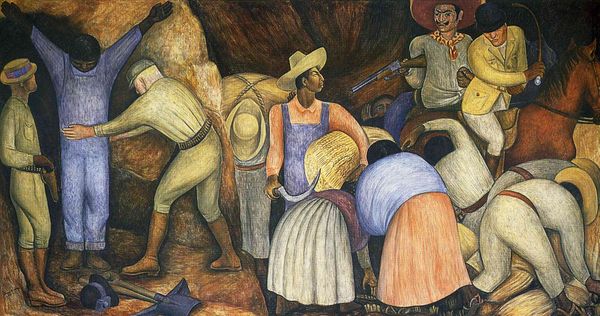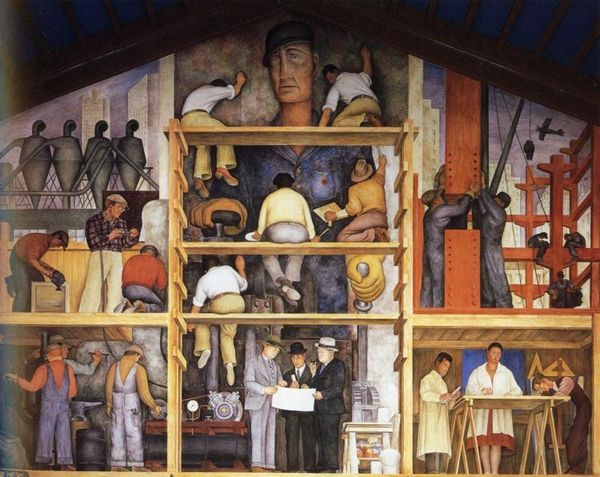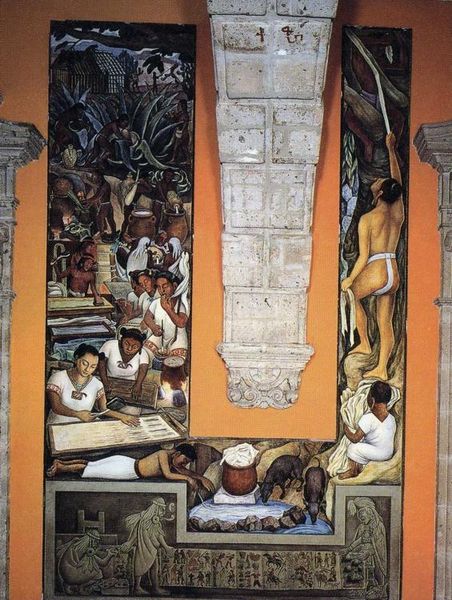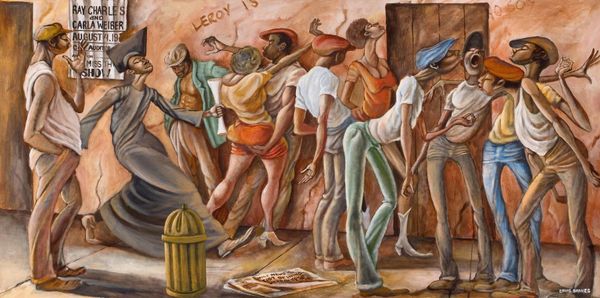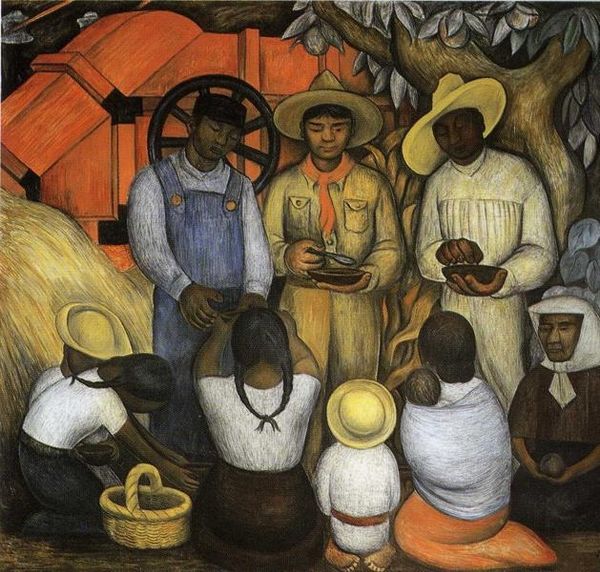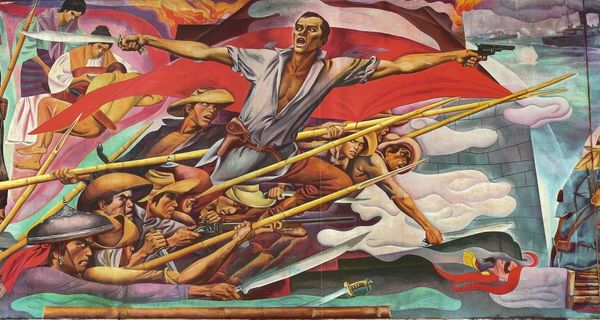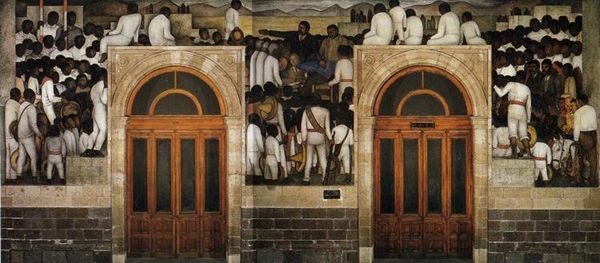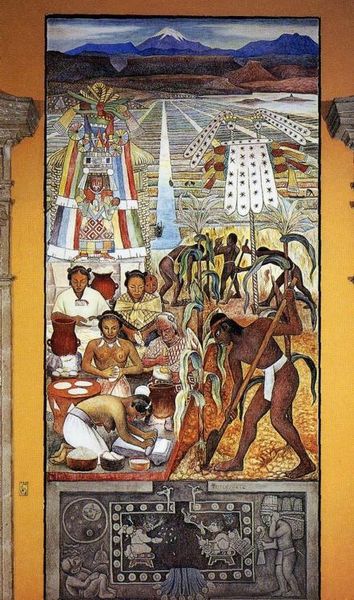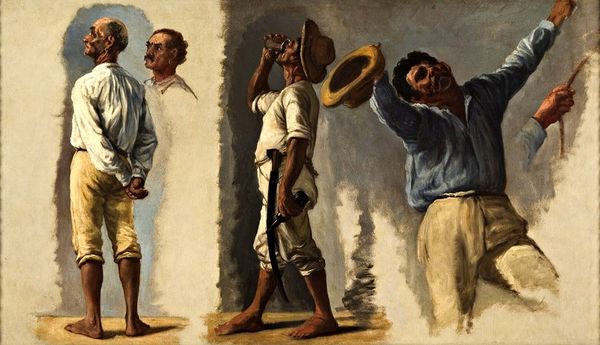
The Arsenal 1928
0:00
0:00
diegorivera
Secretariat of Public Education Main Headquarters, Mexico City, Mexico
painting, fresco, mural
#
narrative-art
#
painting
#
figuration
#
social-realism
#
fresco
#
oil painting
#
mexican-muralism
#
history-painting
#
mural
#
mixed media
Copyright: Diego Rivera,Fair Use
Curator: "The Arsenal", a fresco by Diego Rivera from 1928. The work pulses with revolutionary energy. What aspects of the composition strike you most powerfully? Editor: Well, the figures are densely packed, almost overflowing the arched space, and there’s a distinct separation between the figures in the foreground and the masses behind. How do you interpret Rivera’s use of space and the figure-ground relationship? Curator: The strategic arrangement emphasizes the distribution of arms. Rivera masterfully manipulates the pictorial plane. The receding depth creates a visual hierarchy, accentuating specific political roles and ideological forces. It draws attention to the mechanical equipment, like a precision instrument to amplify the effect of distributing guns for battle. Editor: So, the distribution of weapons becomes a central visual element, influencing how we perceive the painting’s message through space and figure placement. I hadn’t thought about how the depth itself becomes a political statement. Curator: Precisely. Moreover, consider how the flatness inherent in the fresco medium affects our reading. Does the lack of deep, illusionistic space enhance the mural’s didactic function? Does the compressed space feel more forceful than open? Editor: That's a brilliant point. The flattening of the space contributes to a more immediate, impactful message, and adds the force of the delivery. It avoids distractions, almost like propaganda. Thanks for providing a closer reading of the composition. Curator: The pleasure was mine. Observing how such choices reflect his convictions can yield insightful details and help clarify artistic choices that would be missed in just historical summaries of the scene. Editor: It shows the power of form and technique to support ideology and history. I will explore more of that.
Comments
No comments
Be the first to comment and join the conversation on the ultimate creative platform.


